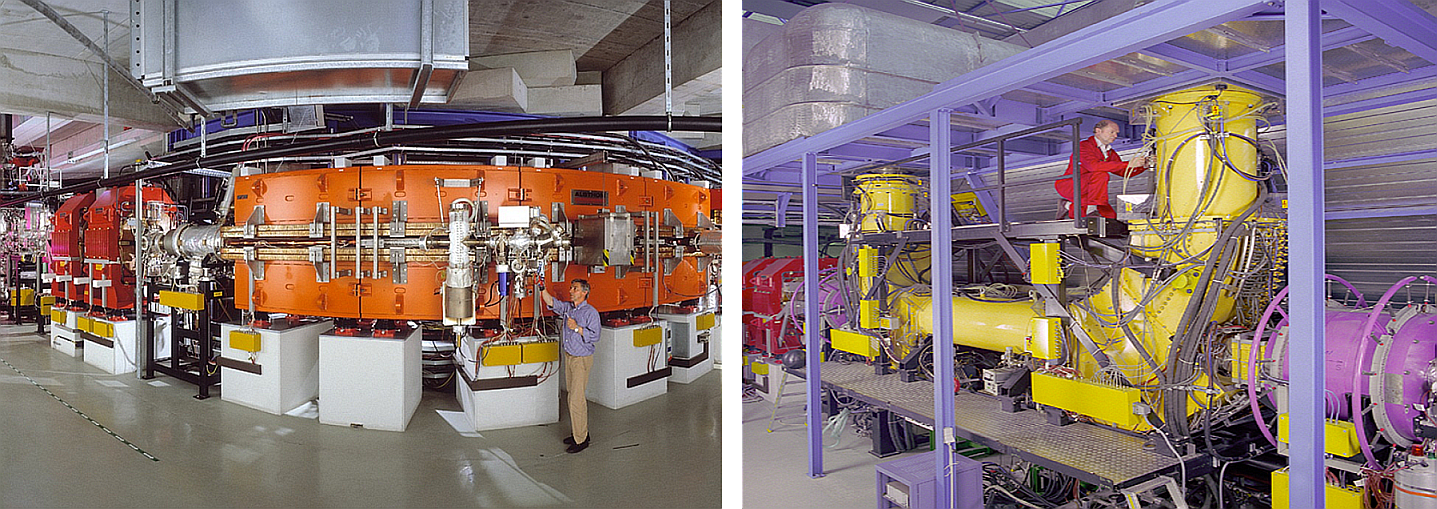ESR Storage Ring
Storage rings are used to store and accumulate ions, which are fed in via ion accelerators, until very high currents are established. High beam quality is ensured by special electron coolers which guarantee that uniform ion bunches are stored within the ring.
In operation at the GSI Helmholtz center for heavy ion research, the experimental storage ring ESR is the first storage ring to cover a working range from helium (Z=2) up until uranium (Z=92), with ion velocities β between 10 % and almost 90 % of the speed of light, thus being the first system applicable for heavy ion research. Consequently, the ESR is offering unique opportunities tailored to experiments with the heaviest ions available.
With a circumference of 108.36 m, the ESR has a magnetic rigidity of 10 Tm and is thus capable of storing uranium ions (U92+) at an energy of 560 MeV/u. However, experiments usually are performed within the regime of about 300 MeV/u, corresponding to ion velocities of about 65 % of the speed of light, and a revolution frequency of 2∗106 s-1. The system’s base pressure is lowered to 10-11 bar in order to minimize the amount of collisions between ions and particles of the residual gas.
Cooling the ions by the electron cooler prevents the beam from becoming too broad in position and momentum space, which would result in degradation of the beam quality. Additionally, the cooling compensates for heating of the beam that may be induced by the ions colliding with each other, the residual gas or dedicated targets.
